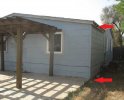Are you a lender or appraiser? The 3 S's for appraising are; Safe, Sound, Sanitary. Many deferred items MUST be addressed. Peeling/Chipping paint, Negative drainage around foundation, roof with less than 2-years remaining life, broken windows,
Students learn how borrower characteristics are classified based on the three C’s of credit (capacity, character, and collateral) and assess the riskiness of lending based on these characteristics.

www.stlouisfed.org
The History of FHA
Congress created the Federal Housing Administration (FHA) in 1934. The FHA became a part of the Department of Housing and Urban Development's (HUD) Office of Housing in 1965.
When the FHA was created, the housing industry was flat on its back:
- Two million construction workers had lost their jobs.
- Terms were difficult to meet for homebuyers seeking mortgages.
- Mortgage loan terms were limited to 50 percent of the property's market value, with a repayment schedule spread over three to five years and ending with a balloon payment.
- America was primarily a nation of renters. Only four in 10 households owned homes.
During the 1940s, FHA programs helped finance military housing and homes for returning veterans and their families after the war.
In the 1950s, 1960s and 1970s, the FHA helped to spark the production of millions of units of privately-owned apartments for elderly, handicapped and lower income Americans. When soaring inflation and energy costs threatened the survival of thousands of private apartment buildings in the 1970s, FHA's emergency financing kept cash-strapped properties afloat.
The FHA moved in to steady falling home prices and made it possible for potential homebuyers to get the financing they needed when recession prompted private mortgage insurers to pull out of oil producing states in the 1980s.
By 2001, the nation's homeownership rate had soared to an all time high of 68.1 percent as of the third quarter that year.
During the “Great Recession” of 2008-2013, FHA played an important countercyclical role, propping up the housing market to supply access to mortgage credit when other sources of financing were limited and the capital markets had seized up.
Today, FHA has active insurance on over 8 million single family mortgages, almost 12,000 mortgages for multifamily properties, over 3,700 residential care facilities mortgages; and almost 100 mortgages for hospital facilities. The combined unpaid principal balance in FHA’s insurance portfolio is over $1.3 trillion.
https://www.HUD.gov/program_offices/housing/fhahistory





